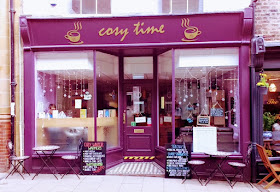Naked or décolleté dresses are suitable only for small parties or extremely formal occasions. A dinner dress is more suitable for the theater or the opera. If you are of limited means, buy a dinner gown rather than a formal gown. For you can wear the dinner gown to formal affairs but you can't possibly wear a formal gown to a public gathering. ~ Orry-Kelly
Orry-Kelly, the costume designer responsible for such Hollywood classics as
Casablanca and
Some Like It Hot, gives this piece of advice in the January 1940 issue of
Photoplay. The issue contains many more bits of great and terrible advice on how to make a good first impression from such luminaries of the 1940s Hollywood as Edith Head, Max Factor, Jr. and Adrian. I will post more of it here soon, but right now I want to get back to the Orry-Kelly quote above.
As I read this, I was immediately curious to know what is the difference between a"dinner dress" and a "formal dress" in the context of the 1940s. Now, a sensible person would have just gone to
Wikipedia. But I am not that person. I decided to figure it out based on context using Photoplay and other such magazines as my guide.
Figuring out what a dinner dress looks like was not a difficult task. Almost every issue had a fashion spread that featured at least one gown that was described as a dinner dress.
 |
| Carole Landis wearing a pink-pearl crepe dinner dress with a slim skirt and a slim peplum, decorated with silver and crystal beads tropical leaves. The skirt is slit at the hemline and the top features an off-center V-neck. Designed by Adrian. 1943 |
As I pored over the dinner dresses, a pattern emerged - they were mostly floor-length, with long sleeves and relatively high necklines.
The problem was that "formal dress" did not seem to feature in any of the fashion spreads. That, perhaps, is not too surprising as Orry-Kelly advises the average woman to step away from formal gowns and go for a dinner dress.
But after following a few clues, I came to the conclusion that a formal gown is one that is sleeveless or even strapless with a low neckline or exposed back.
As one fashion forecast proclaims:
Sleeves will be more generally used in dinner and evening dress than they have been for a decade, but will be most heartily approved in transparent fabrics. ~ Photoplay, 1939
 |
Ginger Rodgers models an evening gown from Once Upon A Honeymoon. The gown is satin in sun tan, a color described as richer than beige and deeper than ivory. It has a tight-fitted strapless bodice and a flaring skirt with bugle bead and rhinestone embroidery. Designed by Leslie. Photoplay 1943
|
One other feature of such a dress was its price. A formal dress would cost more than a dinner dress as the cost efficiency of dressing less formally is repeatedly remarked upon.
 |
| Maureen O'Hara wears an evening dress of printed satin and silk jersey. The white satin skirt is decorated with black tulips and the bodice is made of draped silk jersey. Raab and Harmell. Photoplay, 1941 |
A formal dress can be styled to serve multiple purposes. A sleek black evening gown can be worn as a dinner dress with a matching over-blouse. It can be worn dancing with a pink chiffon scarf draped over the shoulders and pinned at the waist. And it becomes appropriate attire for a restaurant paired with a tight-fitting lamé jacket. (
Photoplay, 1941). A last year's strapless dress can be turned into a dinner dress by covering it with a matching bolero or a lace jacket with long-sleeves (
Hollywood, 1940).
It seems that the decade between 30s and 50s was a little more relaxed in terms of attire for formal occasions (for obvious reasons). At least for women. Here are two images of couples dressed for black tie and white tie.
 |
| Source: Photoplay 1940 |
While the man is dressed very formally, the woman seems to wear outfits that are relatively informal. For black tie (top image) she wears a crimson jersey blouse with jet embroidery and a slick skirt that flares in front. The entire outfit would have been available from for about $15. For white tie (bottom image) the man wears "tails", while the woman wears a white flannel suit decorated with pastel pearls and gold embroidery. The skirt is slit in front and has a small train in the back. The entire outfit could be had for $20. The outfit looks modest but the price is anything but. According to some calculations, $20 would be more than $300 today.
In stark contrast to such conservative ensemble is a delightful story in the gossip section of one of the Photoplay magazines from the 1940s about a famous actress who gave her stand-in a nightgown as a gift and threw her a birthday party. To the great shock of everyone, the young woman turned up to the party wearing the nightgown thinking it was an evening dress. I would imagine that such mistakes would have been pretty common at the time: night gowns were very lavish.
 |
| The Goldstein Museum of Design |
Nightgown or evening dress, who can tell.
For more on formal wear in the 1940s check out a great article by
VintageDancer.























